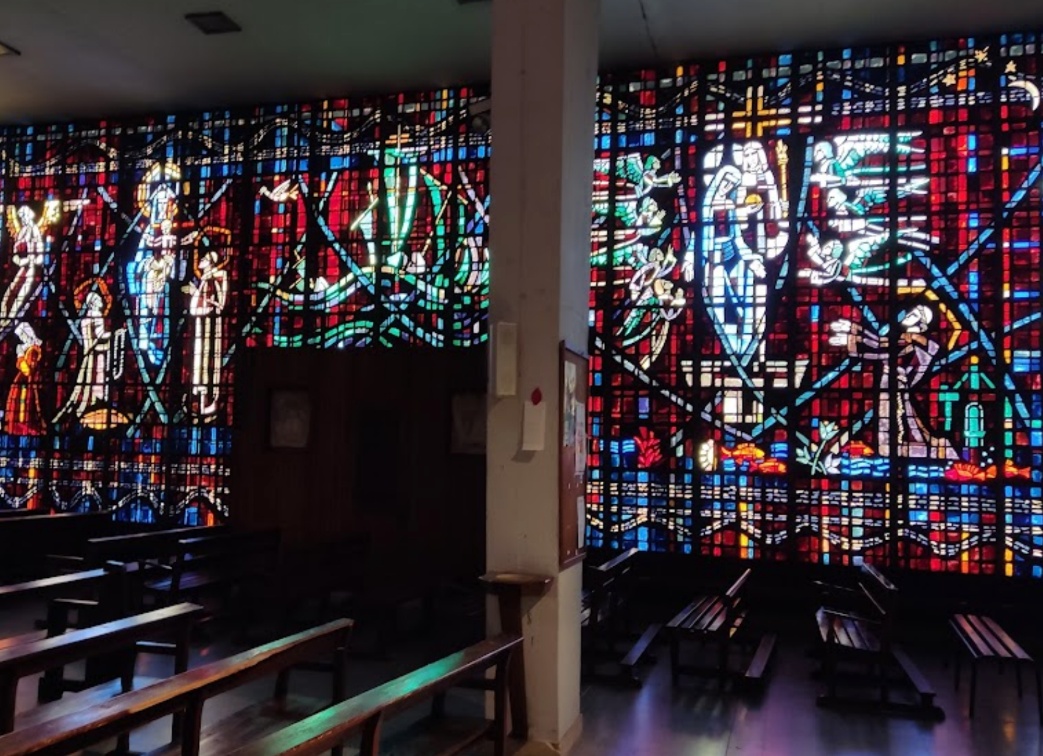Church of Notre Dame de Lourdes: A Beacon of Modernism in Casablanca
Table of Contents
Introduction
In the vibrant city of Casablanca, a city known for its rich blend of Moorish architecture and modernist influences, stands a remarkable structure that diverges from traditional Moroccan aesthetics—the Church of Notre Dame de Lourdes. This modernist church, completed in 1956, offers a striking contrast to the city’s predominantly Islamic architecture. With its impressive concrete facade and breathtaking stained glass, the church is not only a place of worship but also a testament to Casablanca’s diverse cultural heritage and architectural innovation.
Historical and Cultural Context
The Church of Notre Dame de Lourdes was constructed in the mid-20th century when Morocco was still under French colonial rule. Designed by French architect Achille Dangleterre and engineer Gaston Zimmer, the church was built to serve the growing Catholic community in Casablanca, reflecting the religious diversity of the city. Its completion came at a pivotal time, just as Morocco was on the cusp of gaining independence, adding layers of historical and cultural significance to its establishment.
Architectural Significance
The architecture of Notre Dame de Lourdes is a departure from the ornate, historical buildings commonly found in Moroccan cities. The church’s exterior is characterized by its stark, angular concrete forms—a hallmark of the brutalist style that gained prominence in the mid-20th century. This minimalist approach extends to the church’s towering facade, which is devoid of the intricate decorations typically associated with religious buildings, focusing instead on geometric simplicity and the raw beauty of its materials.
The Stained Glass
The most notable feature of Notre Dame de Lourdes is its vast panels of stained glass, created by the French artist Gabriel Loire. These panels are among the largest in the world and depict biblical scenes and figures in vibrant colors that flood the interior with light and color. The stained glass not only serves as a visual focal point but also embodies the church’s spiritual purpose, illustrating stories from the Christian faith in a kaleidoscope of hues.
Interior Design
Inside, the church’s interior is spacious and airy, with high ceilings and bare concrete walls that focus attention on the altar and stained glass. The use of concrete continues throughout the interior, softened by the colorful reflections from the stained glass windows. The overall effect is one of contemplation and reverence, providing a peaceful sanctuary from the bustling city outside.
Cultural and Community Role
Despite its primarily religious function, Notre Dame de Lourdes plays a significant cultural role in Casablanca. It stands as a symbol of tolerance and coexistence, reflecting Morocco’s long history of religious diversity. The church not only serves its congregation but also attracts visitors from around the world, drawn by its architectural uniqueness and historical significance.
Art Exhibitions and Concerts
The church frequently hosts art exhibitions and cultural events, including concerts and recitals, which showcase both local and international artists. These events highlight the church’s commitment to fostering cultural exchange and community engagement, making it a hub of artistic activity in Casablanca.
Challenges and Preservation
Maintaining a structure like Notre Dame de Lourdes poses considerable challenges, particularly in preserving its unique architectural features, such as the stained glass, against the harsh environmental elements of Casablanca. Efforts to preserve the church involve regular maintenance and restoration projects, ensuring that it continues to serve its community and remain a vital part of Casablanca’s architectural heritage.
Visiting Notre Dame de Lourdes
Visitors to Casablanca are encouraged to explore Notre Dame de Lourdes to fully appreciate its art and architecture. The church is open to the public, and guided tours are available to provide insights into its history, art, and architecture. Attending a mass or a cultural event at the church can also provide a deeper understanding of its ongoing role in the community.
Conclusion
The Church of Notre Dame de Lourdes in Casablanca is more than just a place of worship; it is a monument to modernist architecture, a beacon of cultural diversity, and a bridge between past and present. Its stunning stained glass, minimalist design, and historical significance make it a must-visit for anyone interested in the interplay of culture, art, and architecture in Morocco. As Casablanca continues to evolve, the Church of Notre Dame de Lourdes remains a symbol of the city’s rich, multicultural identity and architectural daring.
Additional Resources
For a broader exploration of Casablanca’s urban and cultural landscape, consider visiting United Nations Square and Rick’s Café. United Nations Square is a bustling hub that showcases Casablanca’s modern urban dynamics and architectural diversity, serving as a central point for exploring the city’s cultural heartbeat. Nearby, Rick’s Café offers a taste of classic Hollywood nostalgia, inspired by the famed movie “Casablanca.” This elegantly themed restaurant and bar recreates the atmospheric setting of the film, providing visitors with a unique blend of cinematic history and contemporary Moroccan hospitality.




Comments are closed